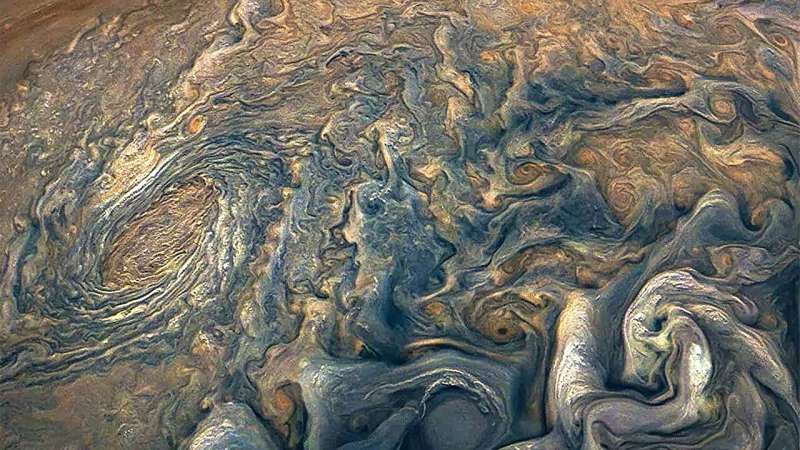This article has been reviewed according to Science X's editorial process and policies. Editors have highlighted the following attributes while ensuring the content's credibility:
fact-checked
peer-reviewed publication
trusted source
proofread
Study shows how amateur astronomers can aid in Jupiter weather monitoring

Jupiter's striking appearance comes from its stormy atmosphere. Swirling clouds surround the gas giant, and their distribution reflects the planet's weather. Scientists have used professional observatories such as the Very Large Telescope in Chile (whose construction in the 1990s cost more than 330 million euro, or US$366 million) and spacecraft such as the Juno orbiter (part of a US$1.13 billion mission) to study Jupiter's meteorology, but they lack some ongoing monitoring abilities. Amateur astronomers have filled in part of this gap by monitoring visible clouds and wind.
Now, in a paper published in Earth and Space Science, Hill and colleagues show that the chemical tracers of Jupiter's weather can be observed using relatively inexpensive equipment, which may allow amateur astronomers to contribute even more to scientific knowledge of the planet's conditions.
Unlike Earth's water-based clouds, Jupiter's topmost clouds are thought to be primarily made of ammonia ice; the atmosphere's ammonia content is indicative of the planet's weather. Ammonia absorbs red light at a wavelength of 647 nanometers. Methane, whose abundance is both fixed and well known to scientists, absorbs orange light at a wavelength of 619 nanometers.
Using a commercially available telescope priced at around US$4,000, the researchers took pictures of Jupiter and looked for spots where there was increased absorption at 647 relative to 619 nanometers, indicating increased ammonia abundance at those locations. They could then calculate the abundance of ammonia using the ratio of these absorptions and the known, unchanging abundance of methane.
This study showed changes in ammonia distribution over timescales ranging from weeks to years, but scientists need more data to understand what these changes mean. The authors say they hope amateur astronomers can use this method to help collect and share more data and that this increased workforce can allow for weekly or even daily monitoring of Jovian weather.
More information: S. M. Hill et al, Spatial Variations of Jovian Tropospheric Ammonia via Ground‐Based Imaging, Earth and Space Science (2024). DOI: 10.1029/2024EA003562
Journal information: Earth and Space Science
Provided by American Geophysical Union
This story is republished courtesy of Eos, hosted by the American Geophysical Union. Read the original storyhere.




















